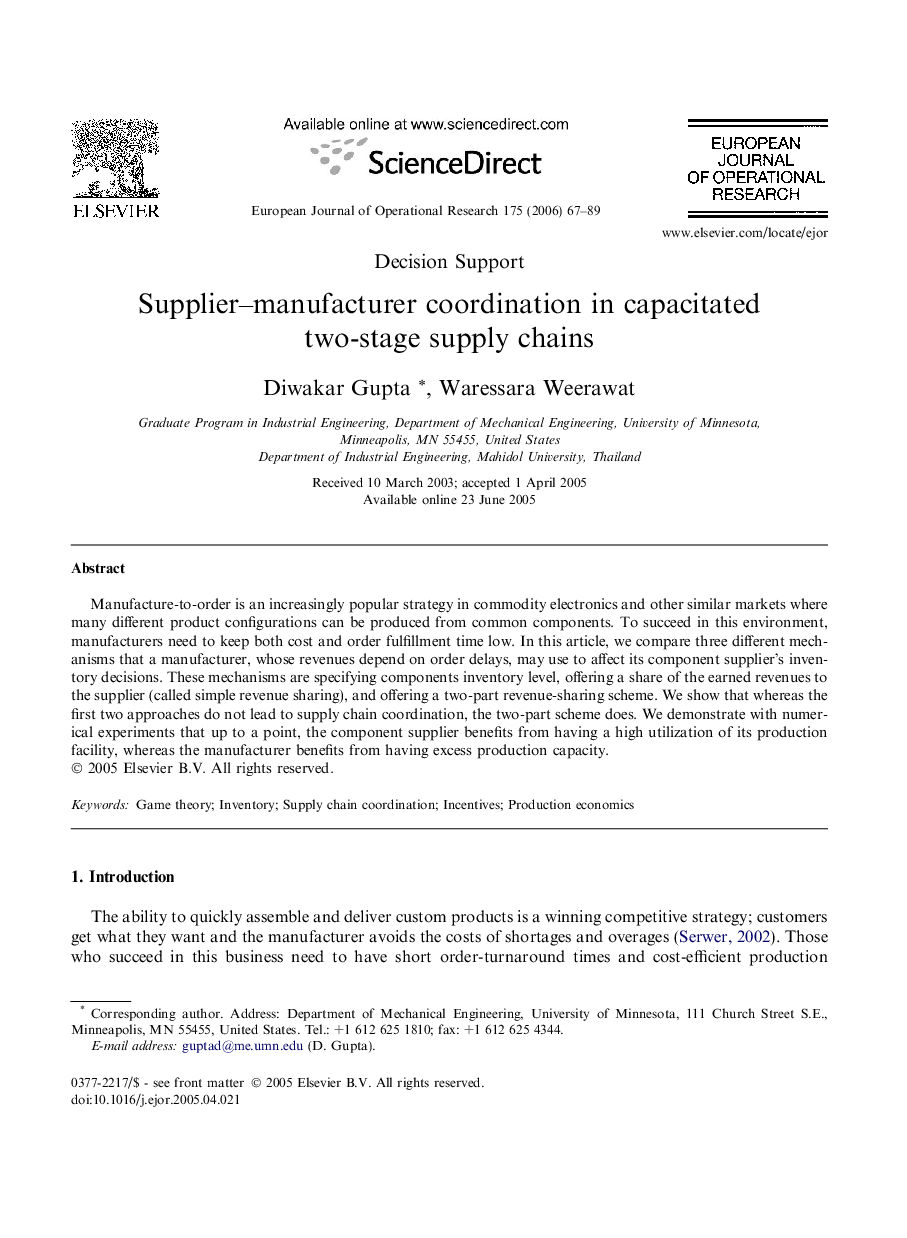| Article ID | Journal | Published Year | Pages | File Type |
|---|---|---|---|---|
| 482337 | European Journal of Operational Research | 2006 | 23 Pages |
Manufacture-to-order is an increasingly popular strategy in commodity electronics and other similar markets where many different product configurations can be produced from common components. To succeed in this environment, manufacturers need to keep both cost and order fulfillment time low. In this article, we compare three different mechanisms that a manufacturer, whose revenues depend on order delays, may use to affect its component supplier’s inventory decisions. These mechanisms are specifying components inventory level, offering a share of the earned revenues to the supplier (called simple revenue sharing), and offering a two-part revenue-sharing scheme. We show that whereas the first two approaches do not lead to supply chain coordination, the two-part scheme does. We demonstrate with numerical experiments that up to a point, the component supplier benefits from having a high utilization of its production facility, whereas the manufacturer benefits from having excess production capacity.
